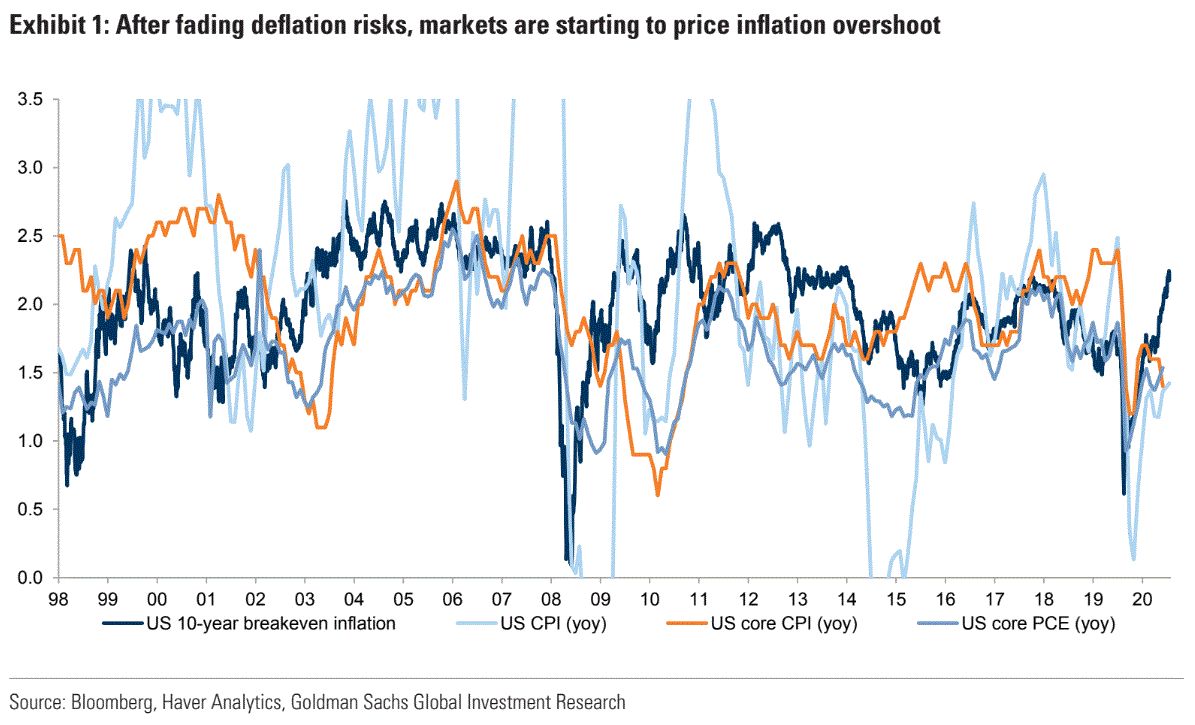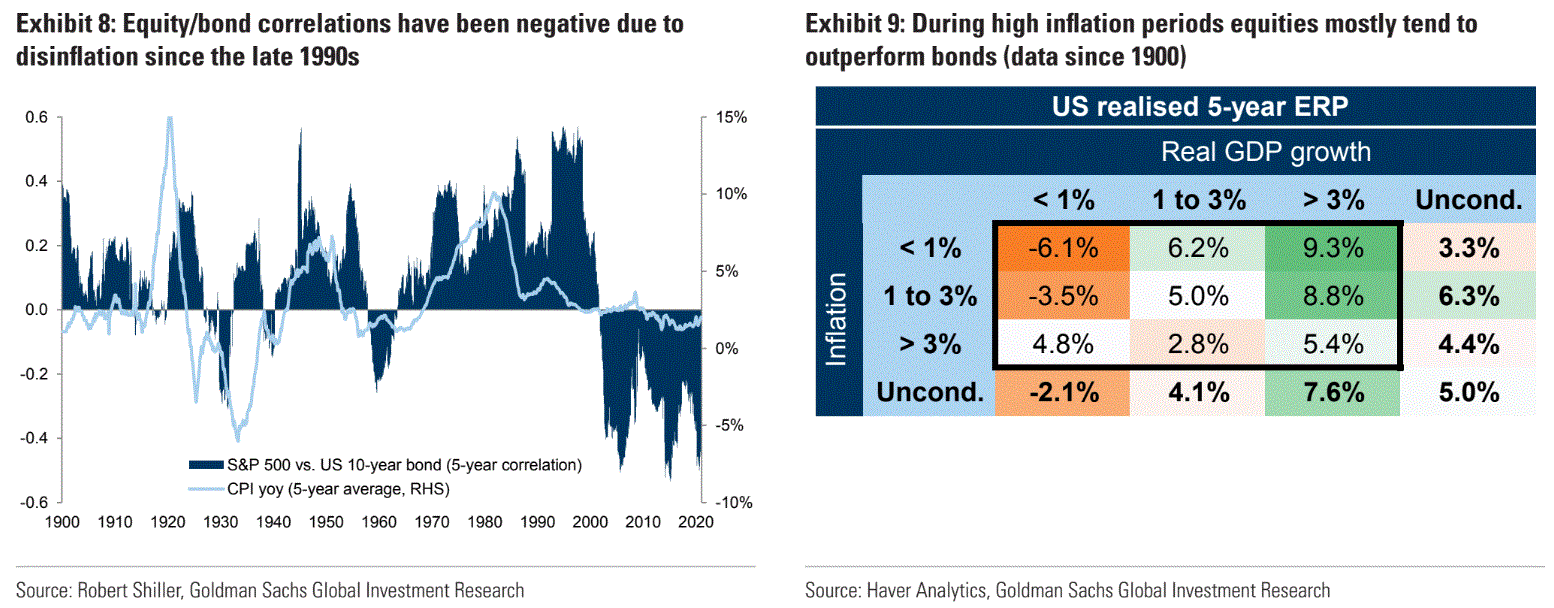More interesting ruminations from a slightly less bullish Goldman Sachs on how to hedge inflation. My own view is that gold is not working as it used to. Real rates have been pummelled but that has triggered a rush to BTC instead. I reckon that given this inflation pulse will be strongest in the US this year, any move to hedge inflation using commodities may also be troubled as the US dollar begins to rise.
That said, I still do not view the coming inflation burst as enduring beyond a huge catch-up surge post-COVID. The reason why is returning global growth will enable China to resume its path of structural reform and slower growth later this year and into 2022, also hurting commodity inflation.
Except perhaps in the US if we see embedded minimum wage increase over the next 3-4 years via policy. But, again, that would trigger a higher US dollar and snuff out inflation worldwide.
I am still a deflationista over the stretch.
Here is the Goldman take:

- US inflation expectations have fully recovered and investors are moving from fading deflation risk to pricing an inflation overshoot. Higher inflation matters critically for balanced portfolios, which tend to perform best when growth accelerates but inflation pressures are limited. This has been mostly the case since the late 1990s, when both equities and bonds delivered attractive real returns and bonds buffered equity drawdowns.
- So far the rise in inflation expectations has not been a headwind for 60/40portfolios as investors mostly faded deflation risk. But with inflation and inflation expectations rising further, the drag from bonds and pressure for higher equity allocations increases, also as bond yields remain close to the zero lower bound. However, with higher and rising inflation the risk of rate shocks is higher, and equities and bonds have often declined together in real terms (eventually).nHistorically broader diversification towards non-US or value equities, TIPS and Gold, as well as commodities broadly, helped a US 60/40 portfolio in periods with high and rising inflation. Especially around the 1970/80s, adding those assets enhanced real and risk-adjusted returns of balanced portfolio materially. But since the late 1990s, with deflation risk more prevalent and closer to the zero lower bound, adding those assets increased risk in the portfolio.
- As inflation expectations increase, so does the potential for disappointment– investors with more reflationary asset allocations need to balance the risk of negative inflation/growth surprises. Close to the zero lower bound, falling inflation expectations can result in higher real yields, which weigh on most assets. Dollar exposure or longer-dated US yield curve flatteners,e.g., 10s30s, could be good portfolio hedges for setbacks on the reflation narrative.
- Rates and FX volatility might pick up irrespective of inflation or deflationrisks– both reset much faster than equity volatility in the recovery last year and can provide opportunities to hedge the tails. In the past we have recommended US rates payers to hedge the risk of higher rates – with steeper curves there is potential for rates volatility in both directions. Similarly, we think FX volatility might pick up, especially in the event of growth shocks.


